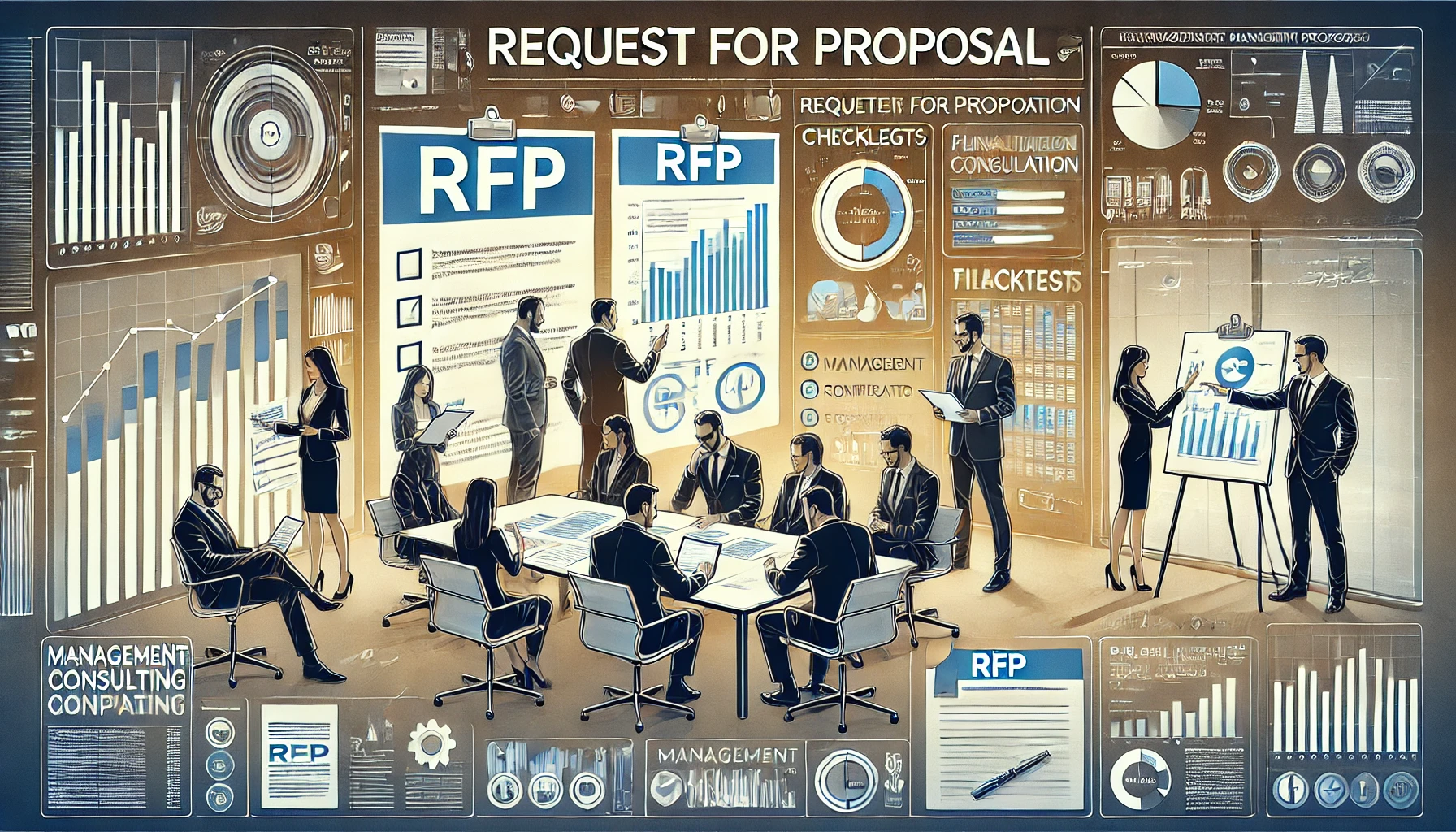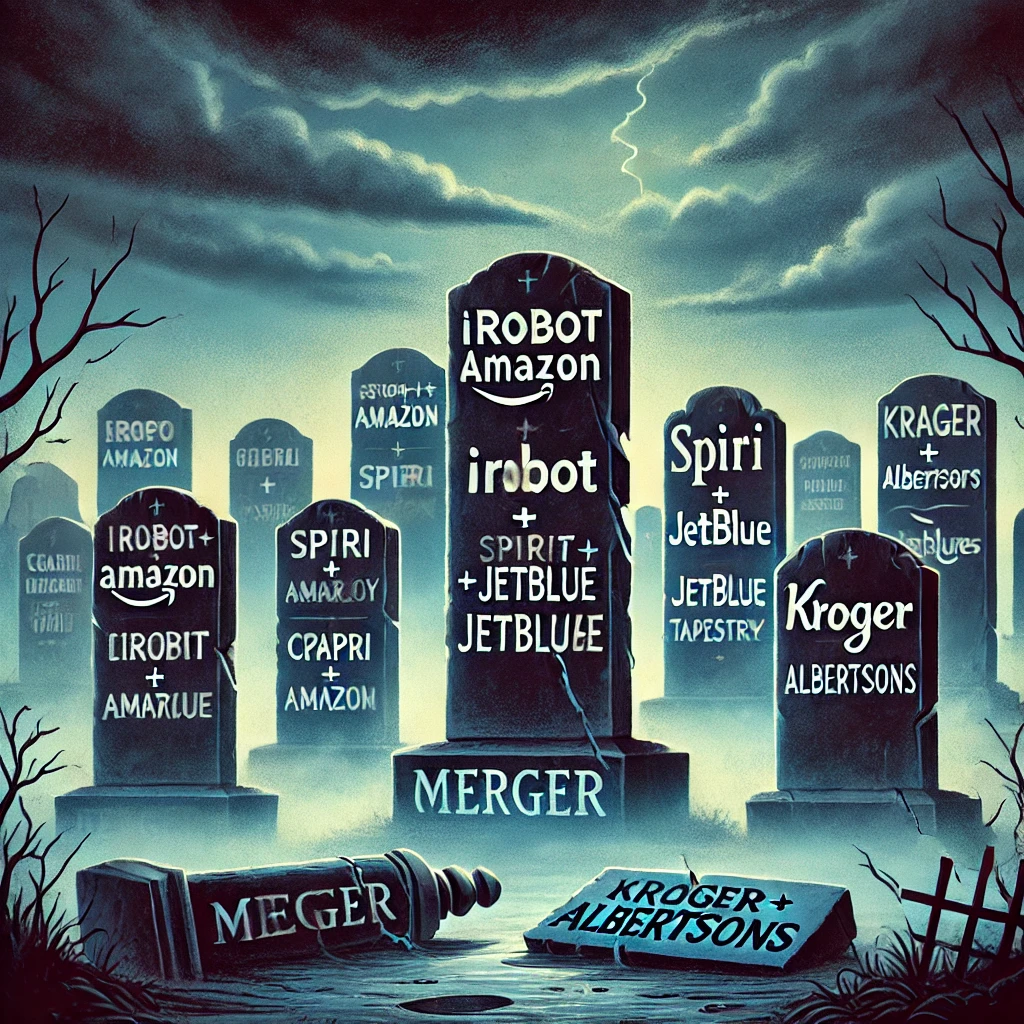Lessons from the Trenches: Mastering the RFP Process
When responding to a major RFP, execution is everything. We’ve seen this firsthand, including during our work supporting a large warranty and services provider in a $1B+ RFP response. Our colleague, Tom Wheeler (LinkedIn), played a critical role in project management during this engagement. Through this experience, we distilled key lessons and best practices that separate winning RFP responses from those that get lost in the pile. Below, we highlight the most common mistakes organizations make when responding to RFPs and the strategies to avoid them.
1. Lack of Centralized Time Management → Appoint a Timekeeper
Mistake: Many companies treat RFP responses as a secondary priority, allowing deadlines to slip and scrambling at the last minute to assemble materials. This results in rushed submissions with inconsistencies, missing information, or poorly articulated value propositions.
Solution: Assign a single individual – ideally from the PMO or marketing team as the designated timekeeper. This person enforces deadlines, manages calendars, and ensures that all components of the response stay on track. High-performing procurement teams leverage disciplined project management to optimize response efficiency.
2. Unclear Strategy → Establish a Clear Response Approach Early
Mistake: Companies often jump into answering questions without first defining a cohesive strategy. This leads to disjointed messaging and a lack of differentiation from competitors.
Solution: Before writing a single response, define the strategic approach: Are we aiming to win outright, or is this about getting to the next round? What are our key differentiators? What is our pricing strategy? Successful RFPs tell a clear story about how the company can solve the customer’s problem better than competitors.
3. Overloading Key Team Members → Assess Resource Bandwidth Early
Mistake: RFPs stretch internal resources, often pulling in already overworked teams. The result? Poor quality responses, missed deadlines, and burnout.
Solution: Conduct an honest assessment of internal bandwidth and allocate tasks accordingly. If needed, bring in external support to ease the burden. Ensure that key stakeholders have dedicated time blocked off for RFP-related tasks. Organizations integrating agile procurement methodologies improve their ability to manage workloads and enhance response quality.
4. Poor Collaboration and Communication → Implement Mandatory Check-ins
Mistake: Teams frequently miss key milestones because stakeholders are not aligned. Miscommunication leads to duplicated work, missing components, or conflicting narratives.
Solution: Hold structured RFP response meetings at least every two days to align on status, resolve bottlenecks, and ensure progress. This disciplined approach prevents last-minute fire drills and ensures a polished final submission.
5. Missing Key Customer Insights → Gather and Address Questions Early
Mistake: Many companies assume they understand the RFP requirements without seeking clarification. This results in responses that miss the mark.
Solution: Gather and submit clarifying questions early in the process. Engage internal SMEs and challenge them to identify gaps in understanding. Successful bidders treat the RFP as a dialogue, using Q&A opportunities to refine their approach.
6. Weak or Generic Differentiation → Emphasize Unique Value Proposition
Mistake: Companies often provide generic responses that fail to highlight what makes them unique. Customers are looking for a compelling reason to choose one vendor over another.
Solution: Develop a clear, consistent value proposition that runs throughout the response. Leverage client testimonials, case studies, and data-backed evidence to reinforce credibility. Avoid overloading the response with unnecessary technical details that obscure the core message.
7. Lack of Supporting Data & Visuals → Use Charts and Graphs to Tell the Story
Mistake: Many RFP responses include dense blocks of text that make it difficult for evaluators to quickly grasp key points.
Solution: Use charts, graphs, and visuals to illustrate critical data points, pricing models, and solution benefits. Visual storytelling can significantly enhance comprehension and impact.
8. Ineffective Use of Testimonials and References → Maintain a Content Library
Mistake: Organizations often scramble at the last minute to gather testimonials or reference contacts, leading to delays and subpar responses.
Solution: Build and maintain a centralized content library with pre-approved testimonials, case studies, and reference contacts. This allows for quick access to high-impact supporting materials when responding to RFPs.
9. Disjointed Financial Modeling → Invest in RFP-Specific Financial Analysis
Mistake: Many companies submit financial models that are either too simplistic or too complex for evaluators to decipher.
Solution: Develop clear, well-structured financial models that align with the RFP’s requested format. Hire or assign dedicated financial analysts who specialize in modeling different pricing scenarios. Organizations that invest in financial modeling capabilities improve their ability to submit competitive and accurate proposals.
10. Overlooking Compliance Requirements → Implement a Compliance Matrix
Mistake: Failing to track compliance across RFP sections can lead to critical omissions and disqualification.
Solution: Develop a compliance matrix to systematically map RFP requirements to response sections. Ensure that every requirement is addressed in full before submission. A well-structured compliance matrix increases the likelihood of a successful bid.
Final Thoughts: RFP Success is About Process, Not Luck
Responding to RFPs isn’t just about having the best solution – it’s about proving you are the best partner. Companies that fail to manage time effectively, align on strategy, or differentiate their offerings risk losing even when they have a superior product or service. By integrating these best practices, many of which we refined through our engagement, organizations can dramatically improve their RFP win rates and position themselves as strategic, reliable partners.
For more insights on optimizing your RFP response process, connect with us. And if you’re looking for a seasoned RFP strategist, we highly recommend reaching out to Tom Wheeler.
Image created using AI (DALL·E) to illustrate strategy, collaboration, and competitive edge needed to craft winning proposals







